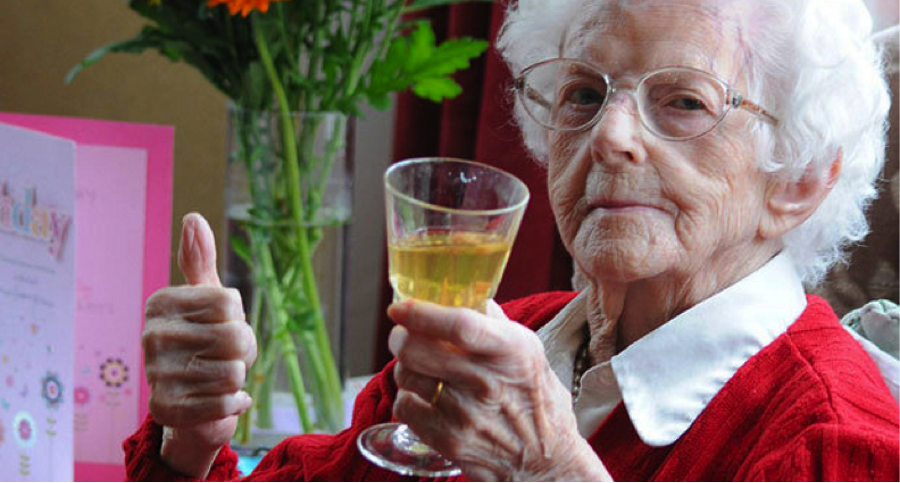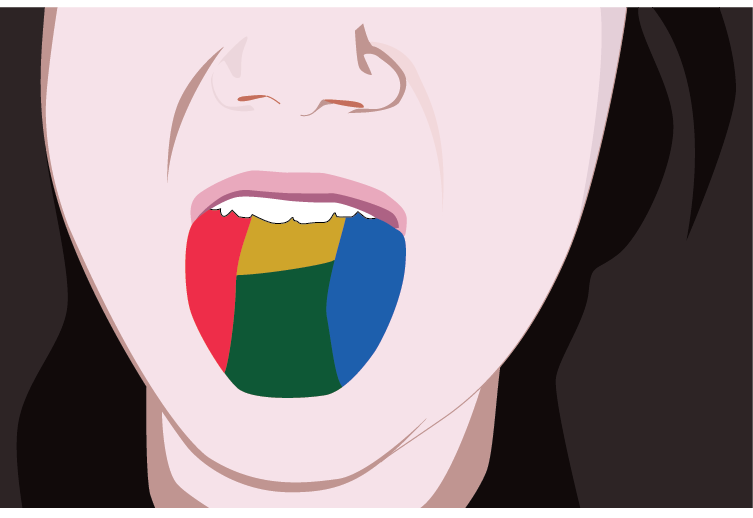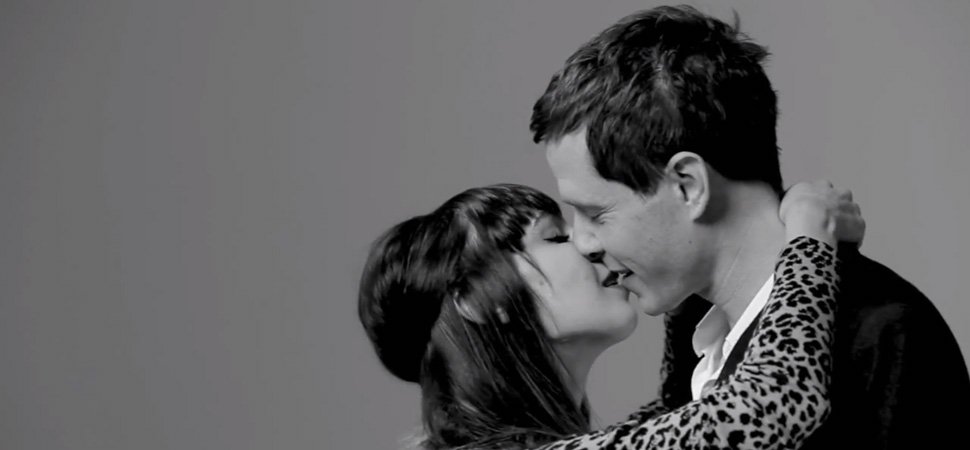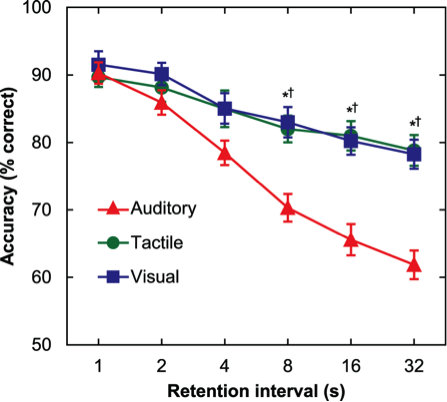You might be familiar with the well-known “Grandmother Test” for determining how user-friendly and easy to understand an idea is. Sit down your grandmother, grandfather, or another family member who is completely unfamiliar with the subject area you’re working on, give them your best pitch, and see if they get the basic idea.
Clarity is a good start, but its not enough. The main point of the test is to make sure that people will understand what you’re talking about. But, your grandmother will usually try to support you and listen no matter what you have to say. Imagine giving the same talk to someone you just met in a bar—would they get bored and walk away?
IDEO Project Lead Nicole Kahn has a solution for transforming presentations into stories that captivate, and she calls it the “Bar Test.”
"Bars are friendly, social places, sure, but something really important happens when you’re at a bar,” explains Kahn. “You use really direct language. You make sure that what you’re saying is entertaining and engaging. You don’t quote tons of data. You don’t use overly corporate language — except maybe in air quotes.”
Before giving a presentation, Kahn and her IDEO colleagues run the Bar Test by giving their presentations to friends or co-workers who are unfamiliar with the subject area. "We grab a colleague …and buy them a beer or a coffee and spend 15 minutes to see if they understand the point of the presentation."
15 minutes could save you.....
Kahn recommends taking 15 minutes to see if they understand the point of the presentation. “We look for when they lean in, or when they look away or reach for their phone. We look for nods and ‘uh-huhs’—we look for what surprises and delights. That’s how we figure out what’s sticky and resonating.”
Why so short? Using only 15 minutes has a dual-pronged effect. First, it forces the story to be succinct. You must get to the point quickly, and also make the story pop. This is helpful, because it compels us to sift through what’s really important for conveying an idea. You might have 5 or 8 slides relating to an idea, but are they all really necessary for describing the heart of your idea?
15 minutes also keeps the investment low. That’s the beauty of the Bar test: it allows for a low-cost trial and error approach. If your first attempt doesn’t get a great response, that’s all right—spend your next 15-minute session using a new approach. The key is to be flexible, and don’t get stuck on one idea.
Passing the Bar test
Kahn stresses three essential strategies
Develop a cohesive “through-line”: What is the main takeaway? Make sure everything in your presentation builds up to and reinforces the underlying “big idea.”
Use compelling anecdotes: These little narratives are what bring your ideas to life and make them personal. Kahn suggests using anecdotes that “provide a tactile sense of experience, take your audience on a journey, and create drama.”
Incorporate personal reflection: Don’t be a robot. Think strategically about moments when you can use your own personal experiences and feelings. These can help cue your audience to react and feel what you want them to during the story.
More bar tricks
Use questions to engage others. Arthur Palac, formerly one of Miller Beers' top ranked salespeople, describes the importance of bolstering your message by asking reinforcing questions such as “Have you ever felt that before?” or “Has something like this ever happened to you?” According to Palac, "If you’ve been talking for over 20 minutes and you haven’t asked a single question of the audience, you’ve lost them."
Use visuals. Visuals don’t just provide another level of information you can use to deliver your ideas, they actually change the dynamics of the entire presentation. Kahn explains, “When you have visuals on the screen and not a lot of words, you make people dependent on you as the presenter to know what’s going on. You have the authority in the room. The slides do not.” Text-filled slides usurp your power to control the room, craft your personal narrative, and hold the audience’s attention.
The next time you need to get buy-in for an idea or make a sales pitch to a customer give the Bar Test a try. No offense to grandma of course.
Photo* - Daily Star Sunday
At Vimodi, we are developing technology that helps users have a more engaging, responsive and effective visual discussions and dialogues. Vimodi enables visual mobile discussions for better engagement, motivation, and creativity in meetings and daily communication. Try Vimodi App.
Clarity is a good start, but its not enough. The main point of the test is to make sure that people will understand what you’re talking about. But, your grandmother will usually try to support you and listen no matter what you have to say. Imagine giving the same talk to someone you just met in a bar—would they get bored and walk away?
IDEO Project Lead Nicole Kahn has a solution for transforming presentations into stories that captivate, and she calls it the “Bar Test.”
"Bars are friendly, social places, sure, but something really important happens when you’re at a bar,” explains Kahn. “You use really direct language. You make sure that what you’re saying is entertaining and engaging. You don’t quote tons of data. You don’t use overly corporate language — except maybe in air quotes.”
Before giving a presentation, Kahn and her IDEO colleagues run the Bar Test by giving their presentations to friends or co-workers who are unfamiliar with the subject area. "We grab a colleague …and buy them a beer or a coffee and spend 15 minutes to see if they understand the point of the presentation."
15 minutes could save you.....
Kahn recommends taking 15 minutes to see if they understand the point of the presentation. “We look for when they lean in, or when they look away or reach for their phone. We look for nods and ‘uh-huhs’—we look for what surprises and delights. That’s how we figure out what’s sticky and resonating.”
Why so short? Using only 15 minutes has a dual-pronged effect. First, it forces the story to be succinct. You must get to the point quickly, and also make the story pop. This is helpful, because it compels us to sift through what’s really important for conveying an idea. You might have 5 or 8 slides relating to an idea, but are they all really necessary for describing the heart of your idea?
15 minutes also keeps the investment low. That’s the beauty of the Bar test: it allows for a low-cost trial and error approach. If your first attempt doesn’t get a great response, that’s all right—spend your next 15-minute session using a new approach. The key is to be flexible, and don’t get stuck on one idea.
Passing the Bar test
Kahn stresses three essential strategies
Develop a cohesive “through-line”: What is the main takeaway? Make sure everything in your presentation builds up to and reinforces the underlying “big idea.”
Use compelling anecdotes: These little narratives are what bring your ideas to life and make them personal. Kahn suggests using anecdotes that “provide a tactile sense of experience, take your audience on a journey, and create drama.”
Incorporate personal reflection: Don’t be a robot. Think strategically about moments when you can use your own personal experiences and feelings. These can help cue your audience to react and feel what you want them to during the story.
More bar tricks
Use questions to engage others. Arthur Palac, formerly one of Miller Beers' top ranked salespeople, describes the importance of bolstering your message by asking reinforcing questions such as “Have you ever felt that before?” or “Has something like this ever happened to you?” According to Palac, "If you’ve been talking for over 20 minutes and you haven’t asked a single question of the audience, you’ve lost them."
Use visuals. Visuals don’t just provide another level of information you can use to deliver your ideas, they actually change the dynamics of the entire presentation. Kahn explains, “When you have visuals on the screen and not a lot of words, you make people dependent on you as the presenter to know what’s going on. You have the authority in the room. The slides do not.” Text-filled slides usurp your power to control the room, craft your personal narrative, and hold the audience’s attention.
The next time you need to get buy-in for an idea or make a sales pitch to a customer give the Bar Test a try. No offense to grandma of course.
Photo* - Daily Star Sunday
At Vimodi, we are developing technology that helps users have a more engaging, responsive and effective visual discussions and dialogues. Vimodi enables visual mobile discussions for better engagement, motivation, and creativity in meetings and daily communication. Try Vimodi App.






